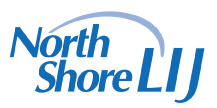- Home
- Media Kit
- Current Issue
- Past Issues
- Ad Specs-Submission
- Ad Print Settings
- Reprints (PDF)
- Photo Specifications (PDF)
- Contact Us

![]()
ONLINE

Streamlining Operations While Fulfilling a Mission
Editors’ Note
Prior to his appointment to Chief Operating Officer in 2005, Mark Solazzo served as Chief of Staff and Chief Administrative Officer to the health system’s President and Chief Executive Officer Michael Dowling. Before joining North Shore-LIJ in 1995, Solazzo held a number of senior-level positions within the New York State Department of Social Services. During his tenure there, he was responsible for the state’s Child Assistance Program. Solazzo culminated his work at the department as the Director of the Bureau of Management and Administrative Support. Solazzo is an adjunct professor at St. Joseph’s College in Patchogue, New York. He earned an undergraduate degree from Fordham University, studied at Albany Medical College, and received an M.B.A. with a specialization in health systems management from Union College, Schenectady, New York.
When you look at the 15 hospitals and long-term care facilities within the health system, are they viewed as independent entities or are certain areas linked?
When we started to form the system, we wanted to create a culture that built upon relationships and a common understanding of where we wanted to go as a health system. So we managed the system as one – we look at the bottom line and what is best for the communities we serve.
Is it challenging to put the metrics in place to evaluate those results and how critical has it been to provide consistent, quality care?
It’s a work in progress. Over the years, we have built a cohesive management and clinical structure that works well across the system. On any given day, you will find clinicians and administrators from one institution working with those from another institution.
We’re focused on three goals: quality, patient experience, and financial performance. Within each of those goals, we identified the metric that we want to concentrate on and the ultimate goal we want to achieve. So there is a great consistency in the line of sight with regard to where we want to go.
Building those relationships, building the management team on both the clinical and administrative side, and mixing them together was critical to getting people on the same page.
So it was all that pre-work that made the work that we’re doing now a lot easier.
How much of a focus do you put on innovation from a leadership point of view?
We need to create our own destiny here. We need to react to whatever is happening around us and decide how we’re going to adapt to that and design our own destiny.
The message we constantly send out is one of empowering our employees at every level to improve quality, efficiency, and service. Michael Dowling and I believe in getting out of our offices to talk to the employees and go where they’re doing the work. Of course, we have formal mechanisms for fostering innovation too; we have what we call an “Idea Forum” where employees can contact leadership with new ideas. Additionally, we have an innovations award that we give out once a year – a competition among all our hospitals – for a team or individual who comes forth with the most innovative idea.•